When you establish a horse farm, it is critical to know about horse reproduction. Reproductive efficiency of an equine breeding operation is a cooperative effort between farm management and the attending veterinarian. The objective of horse reproduction is to produce the maximum number of healthy foals, at the least expense, year after year. Management is vital for reproductive performance. In this article, I shall discuss everything about the horse reproduction as a new owner of the horse.
Essential Information on Horse Reproduction
As a horse owner and lover, you want a lovely foal after each successful horse reproduction. Before going to the vet, you should know some necessary information on horse reproduction. This knowledge will help you to take the right decision on rearing. The essential pieces of information are described in subsequent paragraphs.
1. Selection of Horse for Breeding
Selection of horse for breeding is crucial to horse reproduction. A bright, playful and healthy foal is related to the selection of a healthy horse. Firstly you should have to identify the superior breeding stock, and you must have to record the progeny information. A qualified veterinarian help to you when the selection of horse for breeding. Then a strong mare is needed to a strong stallion. When you select a healthy and robust stallion and mare you must have to know the anatomical structure including size and shape. It helps to give you a healthy, active and disease free foal.
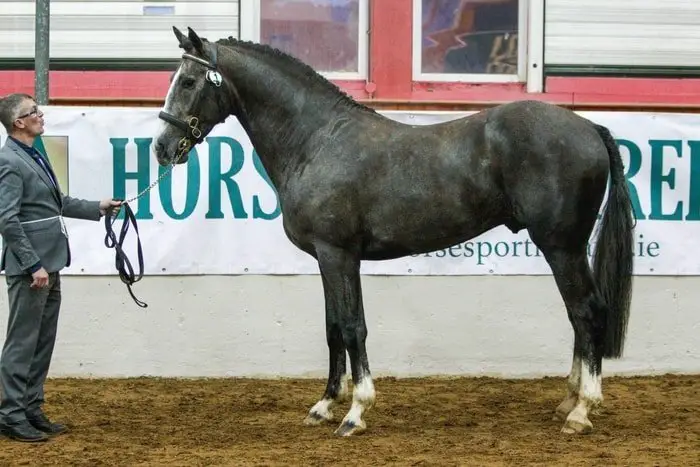
2. The Reproductive Examination of the Mare
Most reproductive examinations can be carried out in a stall or using the entrance to the stall, to provide some degree of protection for the veterinarian and other personnel. The mare should be kept with her foal; if they are separated the mare will become irritated and make an examination. It is helpful if more than one person is available to assist the examiner so that the tail can be held aside and other assistance provided. If a speculum or ultrasound examination is to be made, it is essential to have the mare out of the sunlight so the operator can see.
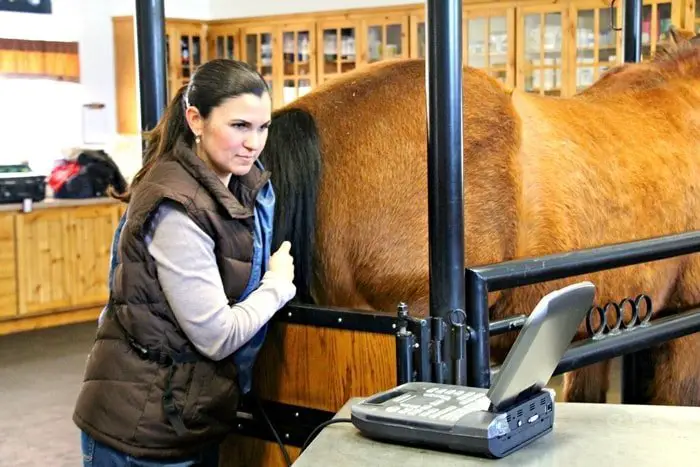
Most examinations are currently performed using disposable equipment, so the spread of disease from mare to mare is no longer a factor. Mares must be washed to remove dirt and fecal material from the vulva period to an examination. The examination of a mare’s vagina, vestibule, and cervix with a speculum is an essential step in determining the mare’s reproductive state. The reproductive examination of the mare should be done by-
- Rectal palpation
- Ultrasound examination
3. The Estrous Cycle of the Mare
Responding to fluctuations in hormone production the mare’s reproductive cycle goes through fertility cycles that last on average 21 days. Two distinct phases comprise the continuous cycle: oestrus, when the mare is ‘in heat’ or “in season,’ i.e., the period lasting 5-7 days, and dioestrus, the period between successive oestrus periods, which lasts 14-16 days.
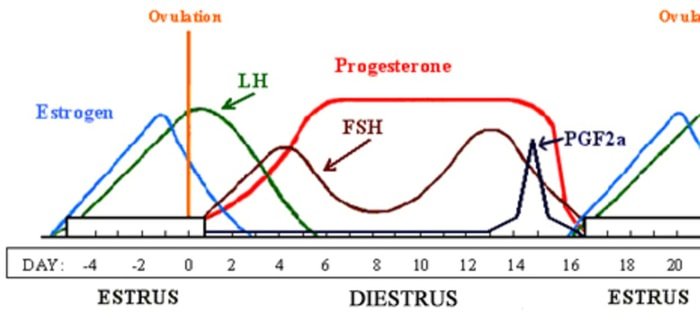
Stimulated by increasing daylight a non-pregnant mare will start to cycle in the early spring after a period of inactivity or anoestrus. This transitional phase may be brief or persist for weeks and is characterized by irregular cycles during which the mare may or may not be fertile. After the first ovulation, the estrous cycles become regular until the autumn when the mare returns to anoestrous. The estrous cycle depends on the length of cycle, ovulation and the follicular development.
4. Hormonal Control of the Estrous Cycle
A variety of hormones are produced at various stages of the estrous cycle. These hormones are: Progesterone, luteinizing hormone (LH), prostaglandin (PG), follicle stimulating hormone(FSH), and Estrogen. High level of progesterone is necessary for the maintenance of pregnancy.
Read Also: 15 Most Essential Horse Information For Horse Owner
5. Mare Management
When compared with the breeding activities of most other domesticated animals, horse breeding is relatively inefficient. Although results vary between breeds and studs, only just over 50 percent of mares sent to stud will produce a live foal. This is hugely wasteful, and part of the reason is that horses are not selected for reproductive performance or fertility. Unlike other animals, they are slow to be culled from the breeding herd by infertility, and if culled they are often purchased by another breeder who wants to breed with supposedly superior bloodlines.
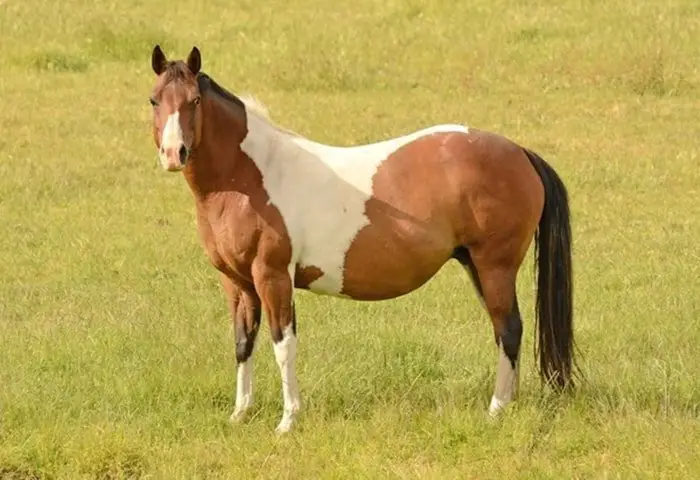
This section will identify some of the areas leading to wastage in horse breeding and suggests ways to improve the efficiency of your breeding program. The mare management depends on the different types of factors. These factors are:
- Feeding
- Parasite control
- Routine horse health care
- Getting the mare cycling
- Horse Teasing
6. Mare Fertility Assessment
This practice is used on stubs to determine the suitability of mares for service, allow assessment of any factors that may contribute to reduced fertility and place mares in order of priority for service by a busy stallion. It allows a mare to be served only one in an estrous period and have a good chance of conception from that service. A detailed systematic veterinary examination should be performed at the end of a breeding season if a mare has failed to conceive to rectify problems before the next breeding season.
Recommended Read: Everything You Need To About Horse Stress and Management
7. Stallion Management
The principles behind the successful management of stallions are based on the purpose for which the horse is to be used, that is, racing, showing, or breeding. Generally, a stallion can be treated in much the same way as any other horse, mainly if he has not been isolated from others for long periods. Stallion management depends on Stable management, the stallion paddock, feeding, Exercise and handling, Parasite control, Routine health care, Fertility assessment, and breeding.
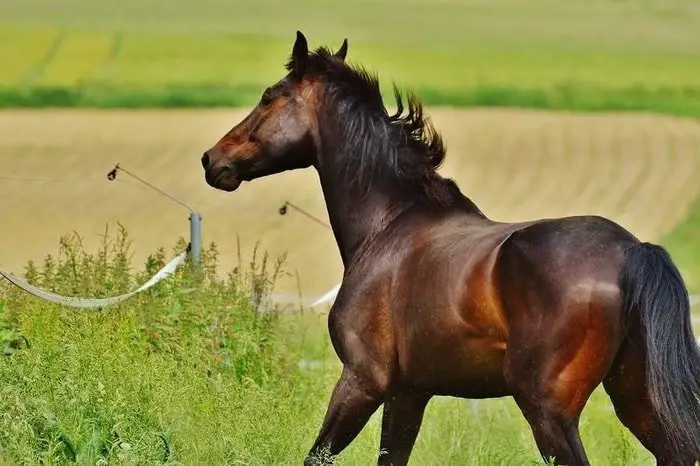
8. The Stallion’s Reproductive System
As an owner of the horse, you must have a preliminary knowledge on stallion reproductive system. The stallion’s reproductive organs are Scrotum, Testes, Epididymis, Spermatic cord, Accessory glands, and penis. A good stallion should have healthy organs, and all are functioning well. Factors controlling the stallions reproductive system:
- Seasons of the year
- Hormones
- Factors affecting fertility
9. Horse Teasing
Teasing is one of the essential operations of horse reproduction. Without an efficient teasing programme, the ability of mares to conceive is severely compromised. Unless you are using paddock mating, where the stallion does the teasing, you will need a method for determining when a mare is in season, and receptive to service by the stallion. The average mare will be in season( in heat, in estrous, on) for 5 to 7 days and will be out of estrous (or”off”) for 14 to 16 days. These periods vary at the start and end of the breeding season.
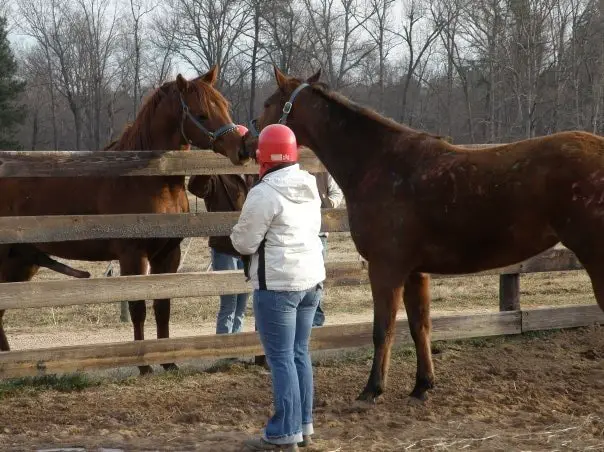
At the beginning of spring, at the start of the breeding season, the ovaries are not sufficiently active, and a mare can be in season for long periods(up to 4 weeks) without having a follicle ovulate. This is referred to as a transitional period, or spring estrous.
Some mares will show signs of estrous behavior without the presence of a male horse, but most mares require stimulation via a colt, stallion or gelding to show that they are in season. Horse teasing can be done in many ways and on a stud farm, it is preferable to have a versatile, flexible teasing system as the same approach does not suit all mares.
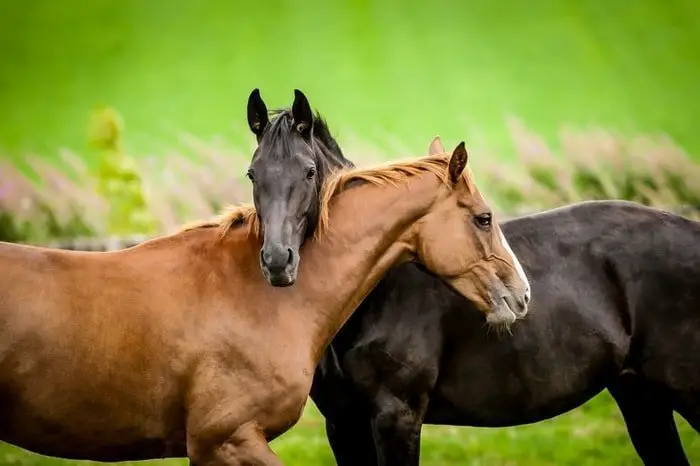
A mare that is not in estrous will show a combination of the following:
- Rejection of the teaser
- Trying to kick the teaser
- Clamping the tail down
- Putting the ears back
Mares that are in estrous will show a combination of the following signs:
- Acceptance of the teaser
- Lifting the tail
- Winking and urinating
- Squatting
10. Horse Reproduction- Hormone Therapy
Hormone therapy is critical factors of the horse reproduction. Hormonal manipulation of barren, maiden and foaling mares when associated with careful management can significantly improve reproductive performance. Progesterone, progesterone, estradiol, prostaglandins and gonadotropin-releasing hormone(GnRH), are all used with varying degrees of success.
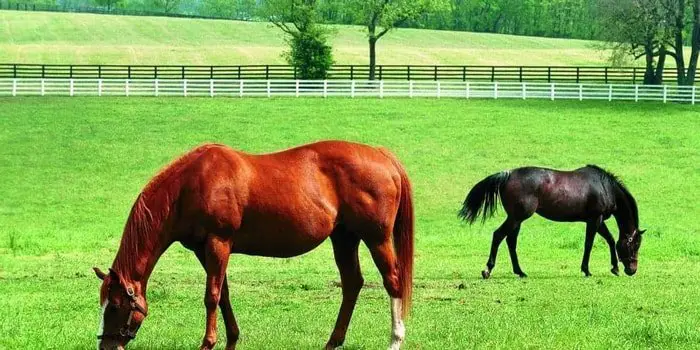
11. Horse Reproduction- Record Keeping
Horse reproduction should have to need performing the record keeping. Records are an integral part of an efficient broodmare operation but should be simple and easy to access. Teasing records on all mares should be recorded on a single sheet of paper. They should be available when the veterinarian is present to examine the mares.
Read Also: Horse Behavior: Understanding Your Horse Mind and Physical Condition
12. Artificial Lighting Programmes:
One management procedure that, if properly implemented, will improve the performance of mare herd the use of lights. Mares are seasonally polyestrous, and their breeding cycles are influenced by increasing periods of daylight. If mares are exposed to increased day length by the use of artificial light, they can be encouraged to come into season earlier than average for the time of year. All types of mares benefit from being placed on a lighting programme. Artificial lighting can also be used to improve the productivity of foaling mares. So you should maintain the artificial lightning programme properly in Horse Reproduction.
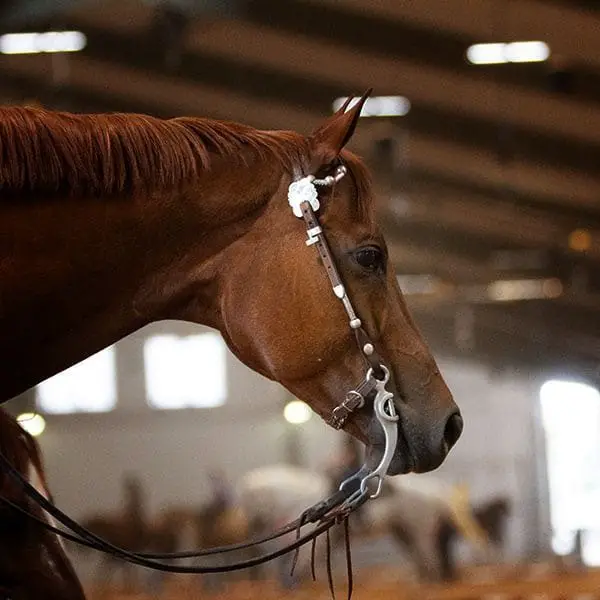
13. Laboratory Aids to Improve Reproductive Performance:
This is the other factors of Horse Reproduction. Laboratory aids to improve Reproductive performance mainly depends on:
- Bacteriological examination
- Cytology
- Biopsy
- Hormone assays
- Endoscopic examination
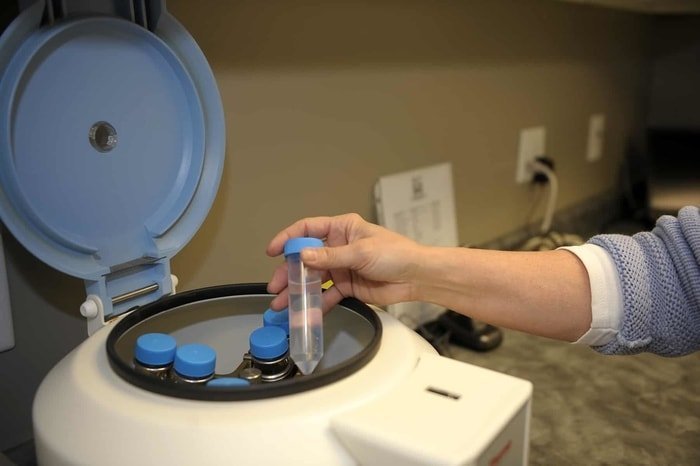
14. Serving the Mare
Now you get the detail idea on the reproductive system of the mare and the stallion. You have also got some bit of knowledge on the selection of healthy horses for reproduction and horse teasing. There are several methods of serving the mare. The most common four ways of getting your mare in foal are:
- Hand service
- Paddock mating
- Artificial insemination
- Embryo transfer
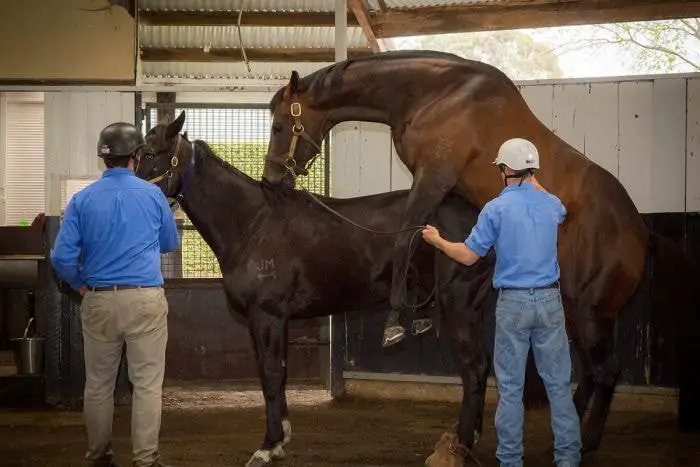
15. Pregnancy Diagnosis in Mare:
Pregnancy diagnosis is an essential part of efficient Horse Reproduction. Accurate early pregnancy tests will enable the mare that is not in foal to be returned to service and will allow excellent management of in-foal mares. Twinning is a significant problem in horse breeding as most conceived twins are aborted during pregnancy, while others are non-viable when born. All pregnancy tests performed earlier than 45 days should be repeated after that time, a loss is less likely after this stage. Pregnancy diagnosis in the mare is held by:
- Manual diagnosis
- Ultrasonic examination
- Laboratory tests
Horse Reproduction- Foaling
The foaling event and its proper management can significantly influence the future reproductive performance of the mare. If the mare has had her vulva sutured it should be opened before foaling. When a mare is ready to foal, it is advantageous to have an attendant present, but in most foaling, very little assistance is needed or advisable. As foaling commences, the attendant should examine the mare to make sure the foal is presented with the nose and front feet being palpable in the pelvic canal.
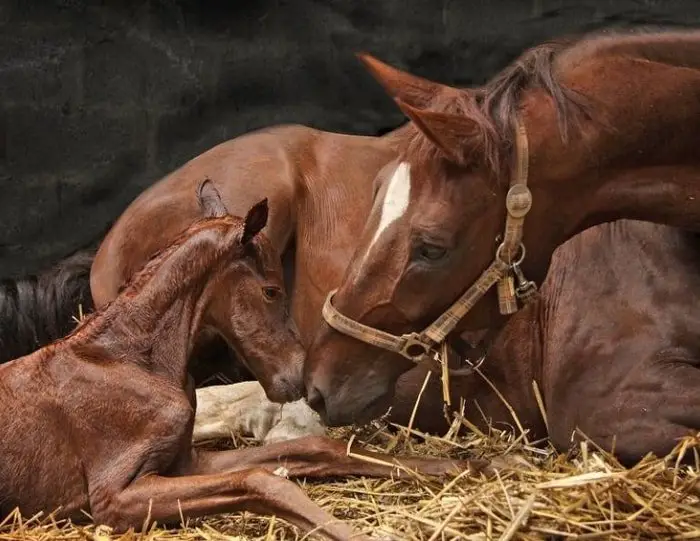
If the presentation, as usual, the mare should be allowed to have the foal unassisted. When assistance is given very gentle traction or merely holding the feet and letting the mare push is usually sufficient. By allowing the mare to take her time the cervix is allowed to dilate, and there is less trauma to the mare and foal than if traction is vigorously applied. Abnormal presentations, such as legs or head not being presented, are reasons for immediate intervention and it is better to call for veterinary assistance even if it subsequently turns out to be unnecessary.
In Conclusion
At last, I want to inform you that the above information is the basic knowledge of horse reproduction. As a horse owner if you have the basic idea on horse reproductive system (Mare and Stallion). The process of horse teasing, health check-up, the system of breeding, foaling, is essential. In my article, I tried my best to put the necessary points on horse reproduction.
If the above information increase your knowledge, please share with other horse owners through social media.